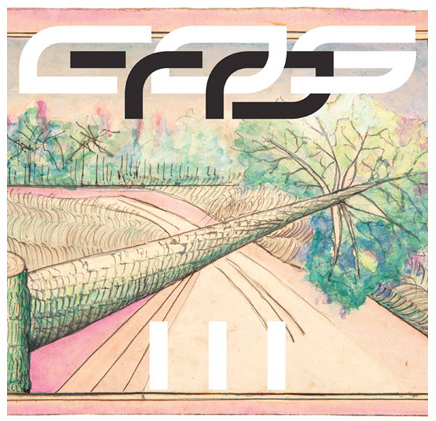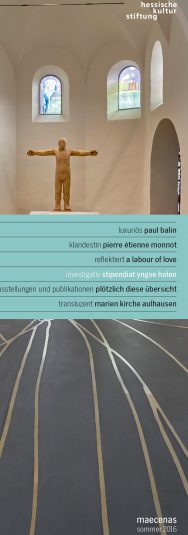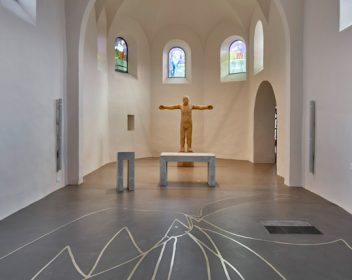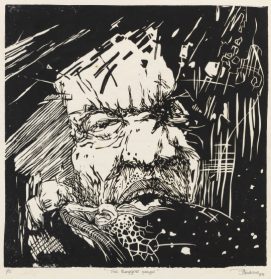stipendiat
yngve holen
ETOPS oder Extended Operations ist der Titel eines Magazins, das der Künstler Yngve Holen (*1982) zusammen mit Matthew Evans und Per Törnberg (Design) herausgibt. Als eigenständiges Beiprodukt zu einer Serie von skulpturalen Arbeiten ist die Publikation ein qualitatives, interview-basiertes Forschungsprojekt über hochspezialisierte Industrien in der Gegenwart. Während in den zwei vorausgegangenen Ausgaben kommerzielle Branchen wie Airlines, die plastische Chirurgie und die Pornoindustrie untersucht wurden, beschäftigt sich ETOPS III mit den Zusammenhängen von Nahrung, kulinarischem Erbe und politischer Ökologie in den Anden und den Regenwäldern des Amazonasbeckens. Mit dem Reisestipendium der Hessischen Kulturstiftung waren Yngve Holen und Matthew Evans 2015 in Brasilien und Peru unterwegs. Die Publikation beginnt mit Interviews, die die Künstler mit bekannten Küchenchefs der Luxusrestaurants D.O.M. in São Paulo und El Central in Lima führten; sie versuchen, regionale Produkte international bekannt zu machen. In Manaus und Tefé sprachen Holen und Evans danach mit Wissenschaftlern über die drängendsten Probleme im Amazonasgebiet und auch im Hinblick auf globale Strategien in den Bereichen Naturschutz, Energie, Biodiversität und Monokulturen. Anhand der Gesprächsaufzeichnungen mit Biologen, Archäologen, Küchenchefs und Agrarexperten versucht ETOPS III die Konsequenzen und Widersprüche aufzuzeigen, die aus dem Bedarf an exotischer Haute Cuisine, an Ernährung für die Weltbevölkerung und dem Schutz des Regenwaldes entstehen.
An dieser Stelle wird ein Exzerpt aus den Interviews vorgestellt, die im Magazin ETOPS III vollständig präsentiert werden. Der hier anonymisierte Gesprächspartner ist ein Weltrang-Gastronom aus São Paulo.
Die Präsentation des Magazins ETOPS III mit Yngve Holen und Matthew Evans findet am 14. Juni 2016, 19 – 21 Uhr, im Rahmen der Ausstellung VERTICALSEAT in der Kunsthalle Basel statt. Die Ausstellung ist bis zum 14. August 2016 zu sehen.
Die erste monografische Publikation zu Yngve Holens Werkserien aus den Jahren 2010 bis 2015 ist vor Kurzem im Distanz-Verlag, Berlin, erschienen. Der Band Trypophobia mit Textbeiträgen von Thom Bettridge, Victoria Camblin, Karl Holmqvist, Pablo Larios, Aedrhlsomrs Othryutupt Lauecehrofn, S01E01 und Eric Schmid ist unter ISBN 9783954761456 im Buchhandel erhältlich.
Can you talk about tucupi?
For us Brazilians and Amazônians, tucupi is as important as soy sauce for Asians. The flavor is not better than soy sauce, but it’s not just something to add either. It’s also a way to preserve ingredients.
What is it?
It’s the juice of manioc.
Is it poisonous?
Yes.
How do you eat it if it’s poisonous?
It’s lightly fermented and boiled for an entire day. It has a lot of hydrocyanic acid. Very poisonous. In Brazil, we have two families. The white one, which is nontoxic, and the yellow one, which is poisonous. Natives prefer the poison one. It tastes better. And in Peru, it’s a different kind of manioc, called chicha, which is a kind of corn beer. But chicha is also the name for any homemade fermented drink.
Can you export tucupi?
Not yet.
Do you do that fermenting here?
No, in the north.
And so you buy your tucupi?
Yes.
And it comes as a liquid?
And tapioca is inside?
No. Tapioca is another product of the manioc. To produce tucupi, you take the manioc, you grind it, put it inside the water to ferment. First you peel the manioc and put it in water to ferment. Then you put it in some kind of nest, and you squeeze. It’s a very long nest. And then you squeeze it into a pot. In the bottom of the liquid there is a white flour. This is tapioca. Then there are different types of tapioca. Manioc flour is one of them. Different types of grains. There is another kind that we eat, but we can’t use it to make tucupi.
How regulated is the process of making tucupi?
It’s easy. You boil it to a certain temperature to eliminate the poison. There is… the producers have small factories.
There are no incidents of people going blind?
No, no.
How old is the practice of making tucupi?
Centuries. It’s not a new ingredient.
Are there regions in Brazil that might have new, undiscovered ingredients.
Yes. There are whole organizations devoted to unconventional edible plants.
Foraging.
Extracting is a big economy for the Amazon.
And all over the country.
Can you create a modern economy from extraction?
Going into nature, with limited control imposed?
We need to work with them more, organize a system inside of it.
It’s complex, a good restaurant. There’s much more behind it in terms of logistics, transport. How often do you get shipments in from the Amazon?
For example, the ants. Did you eat the ants?
Yes, we did. How do you bring the ants?
We get them from a very particular part of Brazil. We need someone to pick them up and bring them personally. And we don’t have restrictions like the FDA imposes in America. They have eaten these ants for a very long time. So we ask, who is coming to São Paulo? Can you bring the ants?
It’s improvised.
And tucupi, we buy it from a producer in Belém. We make the order, and they put in on an airplane, and we sit here. Wait. This chain is official.
How is it to work with Michelin, or San Pellegrino? How do you communicate with such a different style of food than European? Do you often feel it’s too standardized, that ranking system?
Michelin is new in São Paulo.
New in South America?
It is only in São Paulo. Michelin is not in South America. It started here last year. We don’t have anything here that could put us inside that system. We don’t work for awards. If they come it’s better. Our goal is not to achieve Michelin stars. It’s a very subjective award. Of course there are a lot of people who vote.
It can be slightly arbitrary.
How important is waste management for the economics of the restaurant?
For example, at D.O.M., we need to use the best part of the food. But we don’t waste anything. We use the rest of the ingredients to prepare food for our staff, or we use the ingredients for… We have a lot of vegetables prepared in different ways. We even use the roots.
How many people work for the company?
At D.O.M., in the kitchen, we have 16 cooks. 18 inside the kitchen.
We saw someone walk down the street with an ATA shirt on. And we go across the street and ask, where’s Andrea, and they say, over there. It’s a small community here. We’ve been speaking about everything, from the experience to the production. The difficulties, the complexities. We’re not only interested in how you run your restaurants, but also what the political ecology is behind it. The communities you’re involved with. There’s a combination, with D.O.M., ATA, Dalva e Dito, that has complexity. Serving food, but also supporting the communities long-term that make this possible. We’re interested in that relationship.
What we do, even ATA, is not commercial at all. Our rule is not to make money. Our rule is to make good food. Have a dinner. We try to inspire other restaurants. And I can say that we’re reaching a reasonable point. We need to push the buttons. We need to go further. How? So one of the new projects is the market. We have the central market here in São Paulo. A market is always a tourist point. And the central market, a nice representation of the cultural diversity that we have in São Paulo: Japanese, Arabic, Italian, Portuguese, Spanish. But not Brazil. I don’t need to fight.
I don’t need to change that market. It’s working. On the other hand, we have another market, in Pinheiros. And in this neighborhood there are lots of restaurants. Lots of organic stores. People with more money. Through ATA we are reorganizing that market. We’ll run 5 stands with ATA, selling ingredients from local producers from all over Brazil.
Biodiversity is a huge thing in Brazil.
When we talk about biodiversity there’s no taste. There’s no value. To give you one example: wines. 20 years ago, the whole entire world used to drink just a few wines from a few regions. European regions. 20 years have passed, and now we drink wines from all over the world. We talk about geography. About geology. About climate. About different types of grapes. This is biodiversity.
You really have to taste it.
Yeah. This is exactly what we’re trying to do. Natural conservation is not only to protect rivers, seas, and lands. It’s to protect the people who live in the forest. The food chain is very powerful. Through this market, using this possibility, we’re making regular people taste these ingredients and use them in our daily life. This can be powerful.
You have the restaurants, but what could you do more? How do you bring those tastes to everyday people?
One of the biggest human paradoxes for the next few generations will be how to feed the world. This is a big problem. If I ask 10 chefs, or even 10 regular people, what is good? What is healthy? What should we eat everyday? We’re going to have 10 different answers. But if I ask 10 hundred or 10 thousand different people, what is bad? The answer is the same. Big companies are big just because they are clever enough to understand the market message, the market answers.
It’s not about buying good things, it’s about not buying bad things. It’s good to see your staff so involved.
It’s not a religion, but it is a belief. We spend more time together—people who work in the restaurant business—than with our own family. It has to be healthy. We have to eat well and live.
Otherwise, working in restaurants can be very unhealthy.
It is very unhealthy. It is the only single profession that you have to be faster and more perfect at the same time. People don’t want to wait to eat. It’s hard to rush good food. A natural stress.
Restaurants have been changing over the past 15 years. It’s not just about luxury.
What is luxury? This is something that I always ask my customers. First thing, what is more luxurious: buying caviar or having an herb from Amazônas that you can only find there a few times a year? Another thing: we are in the fine-dining scene. In the 80s, 90s, it was the rise of fine dining. When it really came to the mainstream. In the past, people used to travel to go to museums. Today people travel to go to restaurants. This rise started with an economical phenomenon. Trendy. Wall Street. In that time, in the 80s, luxury was having money and going to the restaurant. Driving the BMW. Having the Armani suit. Rolex.
Consumption.
Go to the restaurant, take a beautiful French wine, and know the chef. That was luxury. What is luxury today? We are living another economic phenomenon. You don’t want to buy more Ferraris. Luxury today is comfort. It’s to pass a good moment. There’s a new luxury. Luxury is not means anymore.
Maybe it’s knowledge.
We keep doing fine dining, but in a way that we believe is luxury. Flavors you can only have here. It’s not about money. It’s about time. Having time to come. Even our customers understand that. It was an impossible thing in the 80s to go to a fine-dining place and have a head chef with a lot of tattoos. We do believe the old ways can be sustainable. I don’t like this word sustainable or sustainability. Today companies and regular people only do sustainable things with guilt, with blame.
Conscience.
What is food? Food’s pleasure. Food is good. Food is taste. Food is sexy.
It’s a medium.
We might bring or find or figure out a new meaning for sustainability. Sustainable can be tasty, because it’s good, because it’s… it is luxury. This is not a big change. It’s a tiny change that each one of us has to do every fucking day.
Did you ever think you’d be a chef when you were younger?
No. It was end of the 80s, I was working as a DJ, in a disco, in a club. And I decided to go to Europe. It was a time when Brazil had a huge delay in information. I had this fascination with being a punk rocker—the 80s. So I decided to go, to make a trip to Europe, and live that moment. And understand that. So I did. When I was there I realized that I had a true problem when I decided I didn’t want to go back to Brazil. One was making money. So I started painting walls in a construction business. And the second one was I needed a visa. I might go to some school, some course, to get a visa. So I went to a culinary course, just because one of those guys who was painting with me was doing culinary school. He said, fuck, this is cool. And I realized it’s much more fun and cool being in the kitchen than painting walls. So my first five years as a professional chef… My dream at that time was just living in Europe. And being a chef, it was a way to support that. I decided to go back to Brazil, to move to Brazil again, in 94.
Why?
My first wife was pregnant. Personally, I was… My son must be Brazilian. Nothing against the Italians or the French. We are Brazilian. He has to be born in Brazil. So we went back to Brazil with no money, my wife, big belly. And I didn’t know how to support my family. So again, chef.
You started in 99?
No, no, no, no, no. 89. I started to work as a chef in 8-9. I went back to Brazil 94. I started D.O.M. in 9-9.
And in between 94 and 99 you worked in other restaurants.
I worked in two other restaurants. The first one was Filomena, which is an Italian restaurant. I just got back from Italy. At that time, it was 1990, Brazil was closed for importation. So we couldn’t have real Italian ingredients to do Italian food in Brazil. So in the early 90s Brazil was fascinated consuming European food, and American as well. So the last country I had lived in was Italy. I went back to Brazil. I was contracted to be a chef in this Italian restaurant. But the flavor was not the same. I couldn’t do the exact same flavors as I was doing in Italy. So I started to replace some Italian ingredients with Brazilian ingredients. And this is how I started to create… to open space… people’s minds, to use Brazilian cuisine. Because the ingredients that you guys taste in D.O.M., in 2015, I bet 90 percent of Brazil has never tasted. In 12 years Brazil has changed a lot. Young chefs keep learning and cooking Italian and French food, but give the same attention to Brazilian cuisine as well. Brazilian cuisine is not a shame anymore.
There’s also the specificity of the ingredients and the regions and the production. But there’s also something very fundamental about ATA. It’s about fire. Prometheus or something.
And making people understand that the crossline between culture and nature is food. Food is the crossline. All of human science uses food and alimentation as a way to attract, research about human aspects. Food is much more than feed.
Mato Grosso. I just went back, about two days ago. It’s painful. What you see there… thousands and thousands of hectares—how can I say?—the worst type of agriculture. Cotton and soya. Some corn. Brazil and the US are the world leaders of chemical emissions in agriculture. This model of producing food that we have now… It’s not just about killing animals. It is about sterilizing ecosystems.
Monoculture.
Monoculture. And chemicals. They go into the ground. Down there. They go into the water. They go into the river. There’s huge contamination. ATA, and even myself, we always work in the most preserved areas, the most untouched areas of Amazônas. But something in my mind is changing. Maybe it’s time to also work in this weird place. It is the true Amazônas. It is Amazônas.





